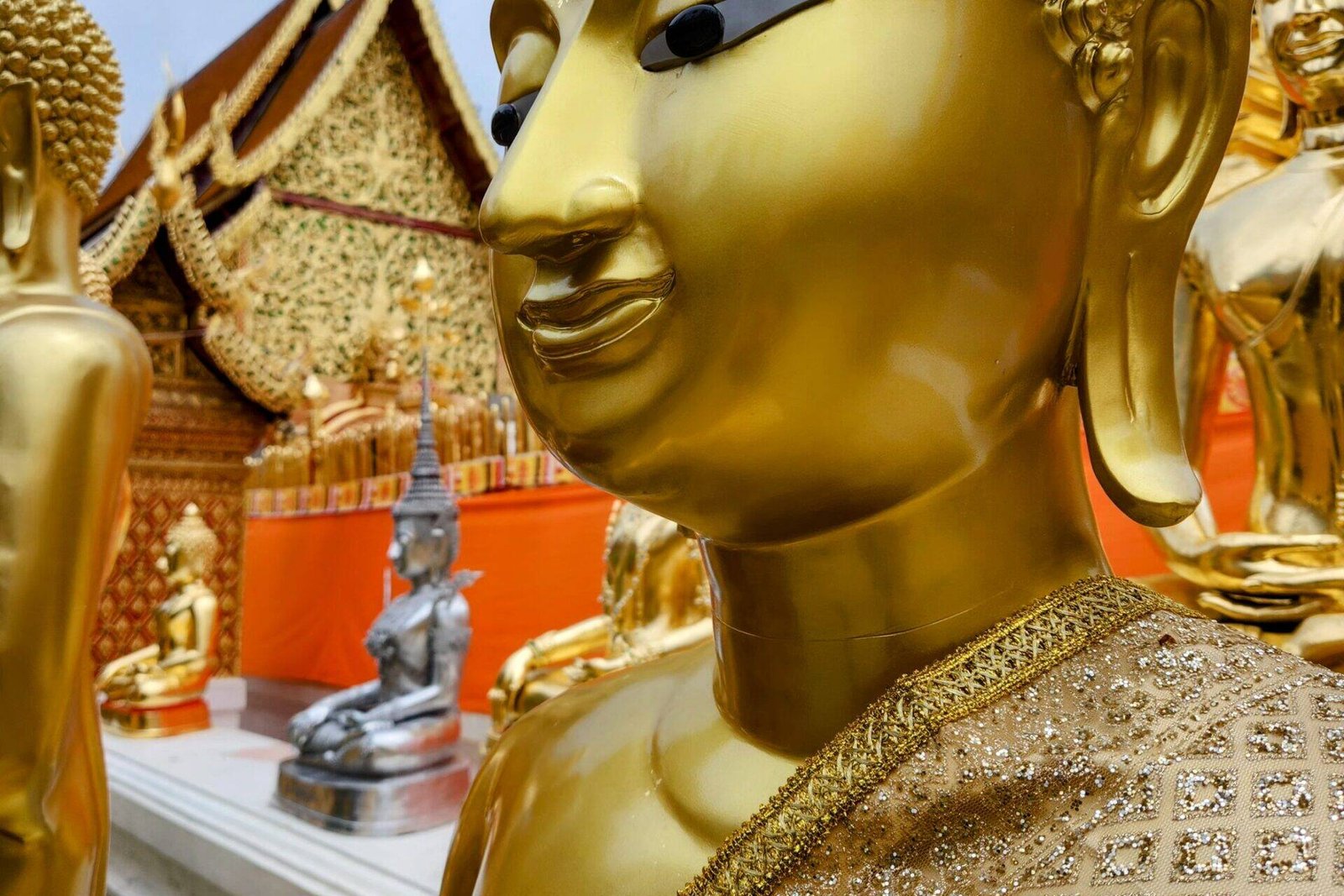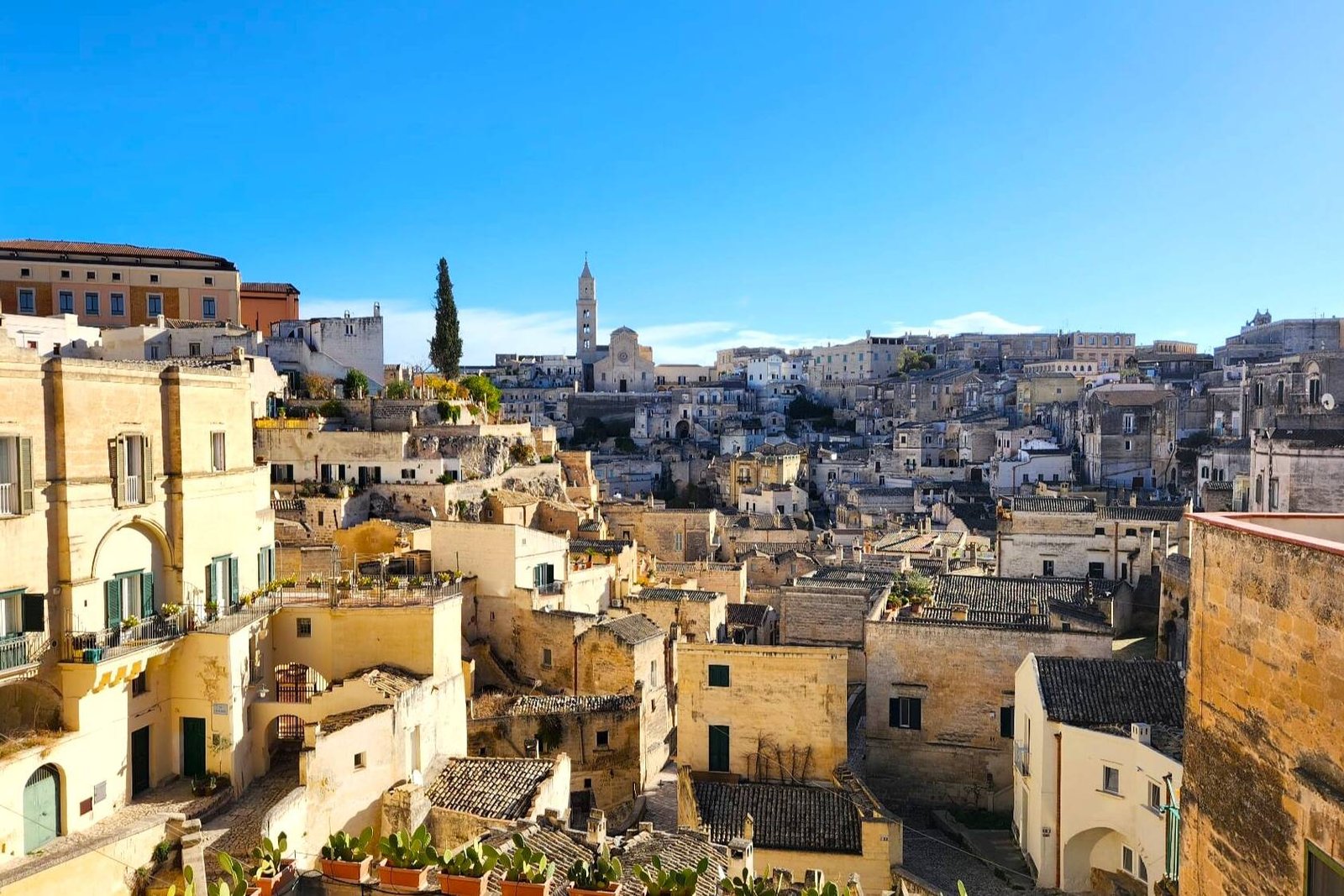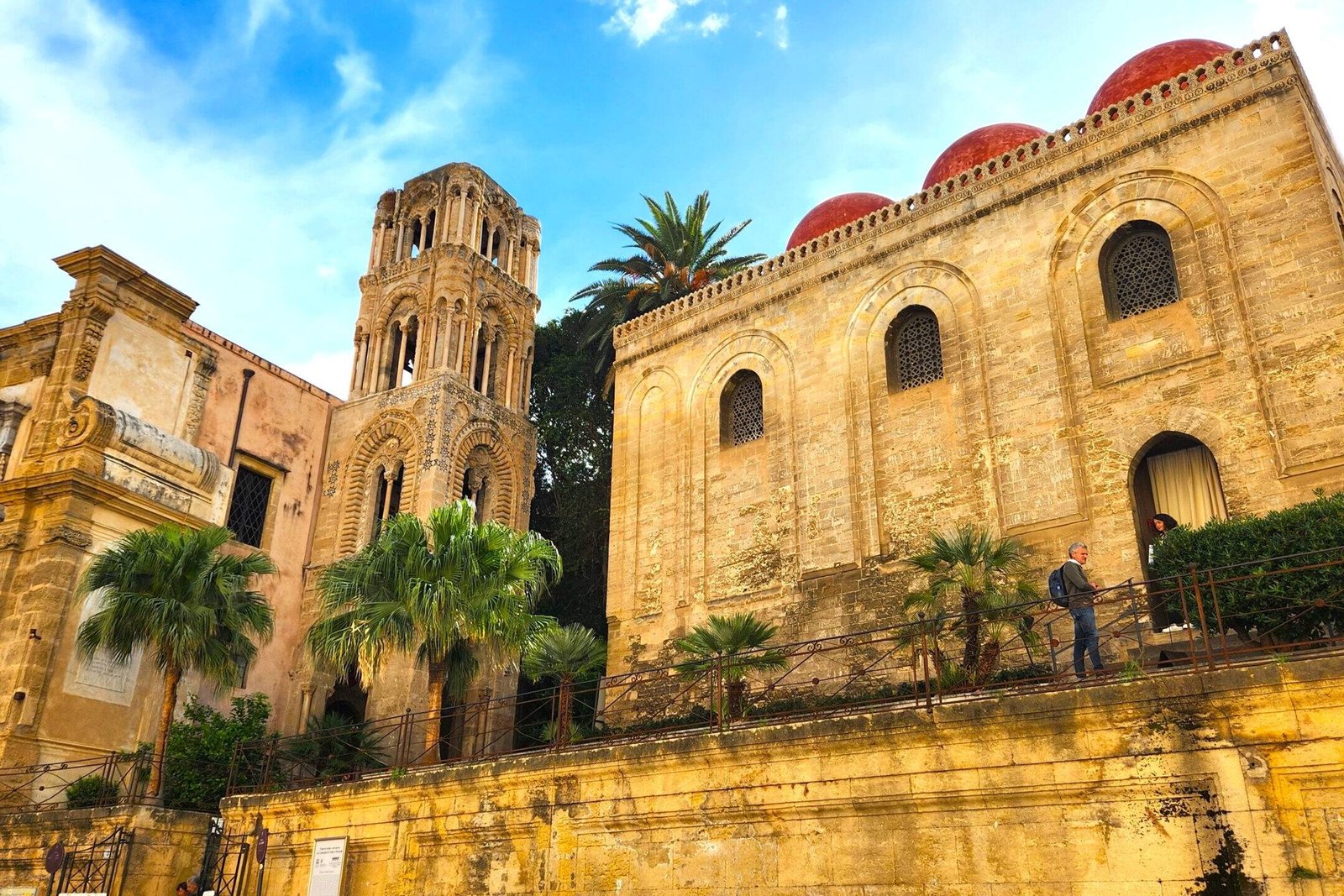Located in the heart of the Peruvian Andes and the gateway to the sacred valley, Cusco is a city that is full of history, culture, and natural beauty. Sitting at an elevation of over 3,400 meters, the city was once the capital of the mighty Inca Empire.
Where is Cusco located
Cusco is located in southern Peru high up in the Andes Mountains about 571km (354 miles) south east of Lima.
How to get to Cusco
Plane: Flying is the fastest and easiest route. There are flights that depart from Lima(1h 20m) as well as Arequipa(1h) and some international flights(most international flights will connect through Lima). Carriers include LATAM, SKY, JetSMART, Avianca and Iberia. From it’s easiest to take a taxi to your accommodation.
Bus: Buses depart from Lima (22hrs), Arequipa(9hrs), Puno(11hrs) and Nazca(15hrs) you can book the tickets online with Cruz del Sur or Busbud or from the local bus terminal. The journey to Cusco by bus is a long and brutal journey through bumpy and windy vomit inducing roads. This is definitely for those on a budget and more time on their hands. If you can squeeze enough out of your budget to fly definitely consider it. That being said we have done the journey twice and only rarely have nightmares about it 😉
TRAVEL TIP: Cusco is at high altitude and you may need a few days to adjust to the altitude where you can suffer from headaches and shortness of breath. For this reason keep the first couple of days free to explore around Cusco before going on excursions to higher altitudes.
essage box. Click edit button to change this text.
Getting Around
Everything around town is centred around the Plaza de Armas and can be easily walked, which is also the best way to see everything anyways as you will soon to discover it’s a joy to walk around these ancient streets and discovering the mix of ancient and colonial buildings blending together.
Taxis: There are plenty of taxis around town and you can use them to get to and from the airport and to some of the nearby archaeological sites in the area. The benefit of a taxi over a tour is that you can go at your own pace but it will cost a little more.
Organised tour: There are loads of tour companies around town offering organised tours all over the Cusco and the sacred valley that will include all your transportation and sometimes meals.
When is the best time to visit Cusco
Dry Season (May-September): The peak tourist season in the Andes so more tourist will be visiting with cold temperatures averaging between -3 °C (27 °F) – 18 °C (64 °F)
Rainy Season (November-March): Low season with rainy days and warmer weather with average temperatures between 3 °C (37 °F) – 19 (66 °F)
Our verdict: Dry season is the best time to visit as you don’t want your dream trip ruined by rain.
TRAVEL TIP: Keep in mind the Inca Trail is closed during February.
Where to stay
Most hotels and hostels are located in the central historical area around Plaza de Armas. There are no attractions outside of about a 4 block radius so stay within this area to be close to the action. There are accommodation options for all budgets and preferences from backpacker hostels to 5 star luxury hotels.
Things to do in Cusco
Plaza de Armas
Plaza de Armas also Known as the “Square of the Warriors” during the time of the Inca, is a bustling square and central hub for locals and visitors alike. Surrounding the square, you’ll find beautifully preserved buildings filled with cafes, restaurants and shops.
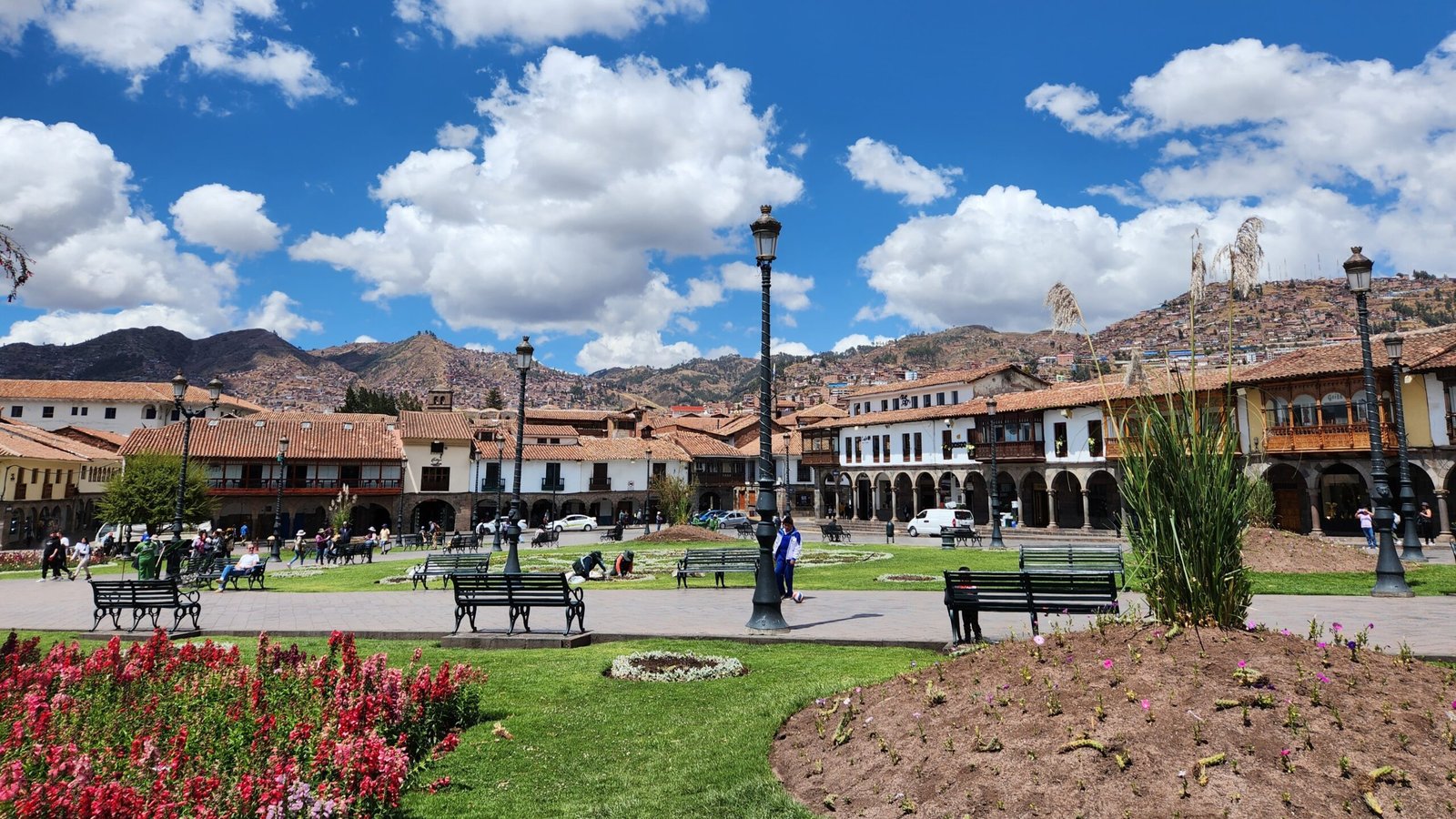
Qorikancha
Qorikancha also known as the “Golden Temple,” Is one of the most important temples in the Incan empire. Its walls were once covered in gold sheets, and its courtyards were adorned with gold statues and ornaments. Unfortunately The Spanish colonizers plundered the temple, stripping it of its gold and later built the Church of Santo Domingo on its foundations.
But not all is lost as you explore the temple where you can still see the perfect craftmanship of the Incan builders in the remains on the original temple. Make sure you go outside and check out the grounds as there are some nice gardens with amazing views of the Andes mountains that surround the city.

Inka Museum
The Inka museum is housed inside a charming colonial building just off Plaza de Armas and is one of the best museums in town especially in you are interested in the Incas. Here you will find artifacts and information found around the sacred valley area.
Inca Roca Wall
Walking through the narrow cobblestone streets of Cusco, you are greeted by a mix of colonial architecture and Inca stonework. One example of this is the Inca roca wall here there is remnants of an Incan building mixed in with a more modern building. This wall is also famous for having the stones in the wall in the shape of the 3 sacred animals to the Inca Puma, Snake and Condor.

San Pedro Market
The San Pedro market is a lively bustling market located in the heart of Cusco where locals come to buy fresh produce and eat at the many food stalls. The market is also a great place to get souvenirs and gifts as it has a large range of handicrafts and Peruvian produce like pisco and chocolate. You can also find vendors selling Andean religious items such as coca leaves, llama fetus and other odds and ends used as offerings to Pachamama an Andean earth god
San Cristobal Church
San Cristobal Church sits hight above Cusco and is the best place to see the city from above. The church is built on top of San Cristobal hill on the site of an old Inca ceremonial complex. And for 2 soles you can climb its belltower and look down on the terracotta rooftops, narrow cobblestone streets, and the epic Andean mountains that surround the city.

Saqsaywaman
Saqsaywaman is a fascinating Incan fortress that was built in the 15th century high up on the edge of Cusco. The site is famous for its enormous, precisely fitted stones, some weighing several tons. These stones were meticulously carved and shaped to fit together without the use of mortar, showing the Incas advanced craftsmanship. You can walk there from Cusco where it will take about 45 minutes each way or jump in a taxi or visit as part of a guided tour.

Explore the Sacred Valley
Cusco is the gateway to the sacred valley and many hikes in the Peruvian Andes. There are many tour operators in Cusco that offer guided tours to all theses places. Some of these places you can visit independently also via taxis or collectivos which can save you money but also can be more of a hassle.
Rainbow mountain
Remote mountain that has colourful bands created by mineral deposits. Everything you need to know to visit Rainbow Mountain

Huchuy Qosqo
Rarely visited Incan ruins only accessible by foot via ancient Inca trails. Check out our guide on how to hike to Huchuy Qosqo

Olyumtombo
Spectacular Incan ruins nestled in the sacred valley.
Machu Picchu
Mysterious Incan city deep in the mountains and probably the reason why you are thinking of traveling to Peru in the first place. Check out our essential Machu Picchu guide.
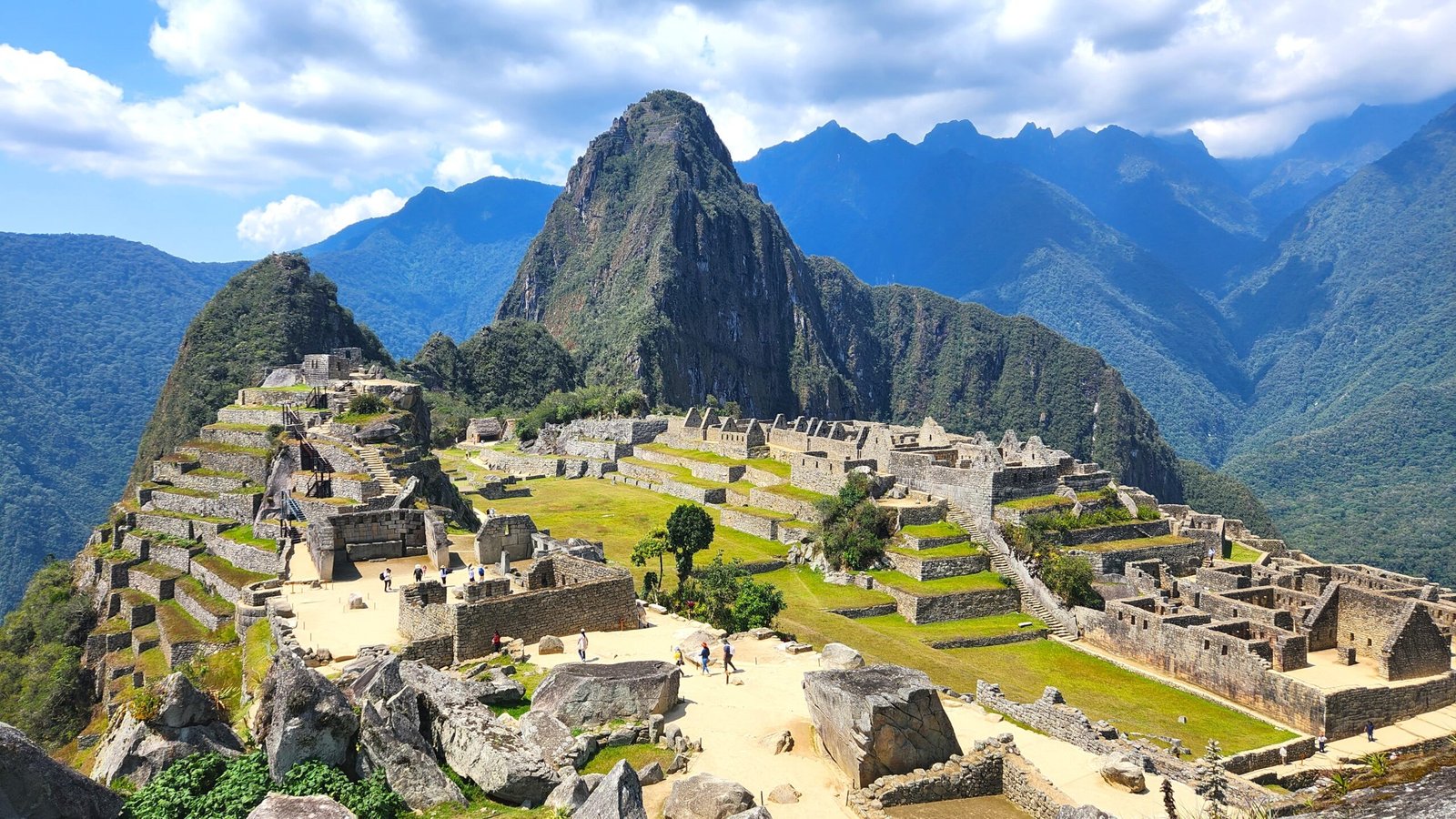
Where/What To Eat & Drink
You will find restaurants all around Plaza de Armas and the surrounding streets some of them with balconies and windows overlooking the iconic square. You will find a large range on Peruvian and international cuisine on offer for all tastes and preferences. Some places we went to that we can highly recommend.
Don Pancho Taberna Peruana
Serving Peruvian food with nice views of Plaza de Armas.
Fuego, Burgers and Barbecue Restaurant
Nice burger joint off Plaza de Armas for when you are getting tired of Peruvian food(you will eventually get tired of potatoes!).
Café-Panaderia Panam
Nice little cafe with lovely cakes and pastries on Plaza Regocijo.
Guinee Pig
Guinee Pig or Cuy as they call it in Peru is generally roasted and served with potatoes and normally eaten on special occasions. So maybe save this dish for after you visit Machu Picchu!

What to pack
In the Andes it’s generally mild to warm during the day and freezing cold at night, so you will need to bring along clothes for all weather conditions also consider the following:
Rain Jacket (we bring rain jackets no matter where we go. Can be a lifesaver!)
Hiking Boots (don’t be a lemon and wear inappropriate shoes when hiking)
Head Lamp (you will have some early mornings and handy for the Inca trail)
Altitude Sickness tablets (if this is something you have had issues with)
Motion sickness tablets (if you plan to take the bus to Cusco)
Obviously we are not doctors and normally wouldn’t recommend medication, but you can have a really bad time if you are known to suffer from any of these problems. So best mitigate any issues so you can enjoy your adventures.
Next Stop:
- How to visit Huchuy Qosqo via the ancient Inca Trails
- How to Visit Rainbow Mountain and what to Expect
- Ultimate Guide to Machu Picchu
Also check out our YouTube video below 👇





